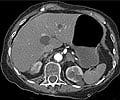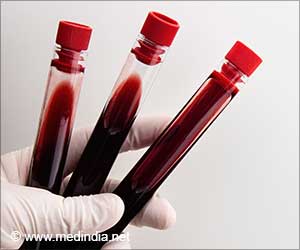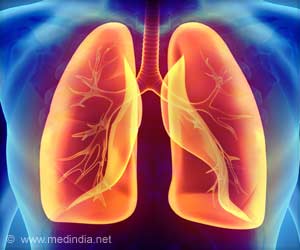A researcher at the University of Rochester, has discovered that the toxins in cigarette smoke destroy a gene having important role in protecting the body from the effects of premature aging.
A researcher at the University of Rochester, has discovered that the toxins in cigarette smoke destroy a gene having important role in protecting the body from the effects of premature aging.
If this gene is absent, one not only loses youthfulness, but the lungs become vulnerable to destructive inflammation and diseases such as chronic obstructive pulmonary disease (COPD) and lung cancer.The study was led by Irfan Rahman, Ph.D., associate professor of Environmental Medicine and an investigator in the University of Rochester’s Lung Biology and Disease Program.
After identifying the Sirtuin (SIRT1) gene’s role in pulmonary disease, the researchers expected to find ways to restore it and kick-start lung healing. They’ve begun testing the powerful antioxidant resveratrol, extracted from red grape skins, to develop a treatment targeting SIRT1 and reverse lung damage, or at least enhance the way standard COPD therapies work.
“This novel protein will allow us to program our body’s immune-inflammatory system against lung damage and premature aging. The hallmark of this discovery is that we may be able to provide remedies to millions of smokers who would like to quit but cannot kick their addiction, and millions of former smokers who, despite quitting, remain at risk for illness as they age,” said Rahman.
For years, Rahman studied how the 4,700 toxic chemical compounds in cigarettes attack lung tissue. He also focused on why some people seem genetically predisposed to develop lung diseases while others are more fortunate, even after being smokers.
SIRT1 plays a pivotal role in the mechanism. It belongs to a class of genes that regulate chronic inflammation, cancer and aging. When this gene is highly active, or over-expressed in mice, worms and fruit flies, it results in increased life spans of these organisms.
Advertisement
The researchers studied the levels of SIRT1 in the lungs of nonsmokers and smokers with and without COPD. 37 patients from Helsinki who were undergoing either a lung resection for suspected cancer or a lung transplant, volunteered to provide tissue samples for the study.
The next step was to investigate what pathways lead to the depletion of SIRT1. It was found that Sirtuin also acts in regulating the entire chemical signaling system protecting the lungs from smoke and pollution.
The researchers investigated how SIRT1 relates to another key protective molecule, Nrf2, a transcription factor. Researchers found that just like SIRT1, an airway deficient in Nrf2 is weak and inflamed and more susceptible to conditions such as COPD.
Nrf2 was also important because it directly regulates several antioxidant genes such as gluthathione (GSH), the most abundant cellular antioxidant responsible for detoxifying the airways. Thus, the pathway from SIRT1 to Nrf2 ultimately leads to the depletion of GSH, worsening the organ’s aging process.
“You can be 45 years old and look great on the outside, but if you are a smoker or former smoker, your lungs can easily be 60 years old because of the chemical assault,” said Rahman.
The research was published in two separate studies, in the American Journal of Respiratory Critical Care Medicine, and in the American Journal of Physiology.
Source-ANI
SRM/KAR











